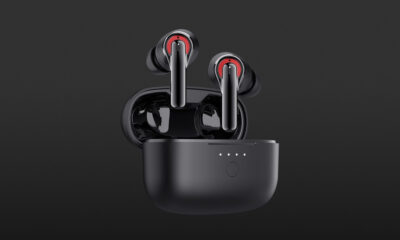Product Reviews
SoundMAGIC Wireless Headphones: High-Quality Audio For Budget-Minded Listeners
SoundMAGIC has released several award-winning headphones, and the P23BT & P60BT are both worthy additions to the impressive product lineup.
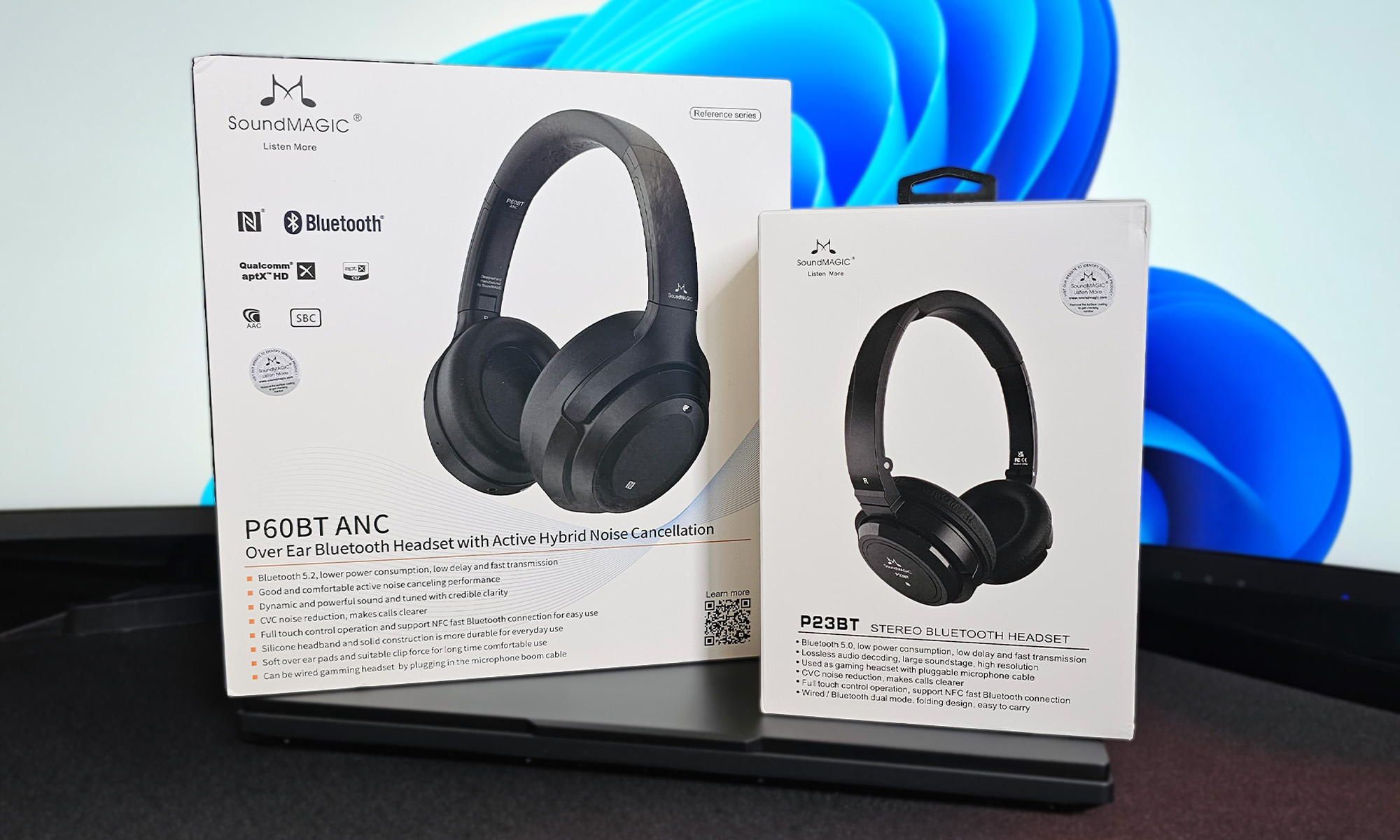
It’s simple to find a pair of great-sounding wireless headphones if you’re willing to fork out the equivalent of a small car. But what about those of us who want more bang for fewer bucks? Enter SoundMAGIC, a brand that has been defying the audio odds for nearly two decades.
Today, we’re exploring the specs, performance, and value of two of the company’s best-selling products: the SoundMAGIC P23BT, extremely affordable on-ear headphones and the SoundMAGIC P60BT, over-the-ear headphones with active noise cancelling (ANC) that cost significantly less than anything comparable on the market.
About SoundMAGIC
SoundMAGIC was founded in 2005 by acoustic design engineer Tony Xu. Since then the company has become a major force in the budget audio landscape, establishing itself as a go-to brand for quality audio without the premium price tag.
A standout testament to the value of SoundMAGIC products are the E10/E10C in-ear headphones, which have won the What Hi-Fi award for six consecutive years. Their success was followed up by the E11C in-ear headphones, which not only lived up to the high standards set by its predecessors but also managed to win the same prestigious award.
Unlike many other headphone manufacturers that rely on aggressive marketing and splashy ad campaigns, SoundMAGIC adopts a more restrained approach. Their philosophy is simple: make great products and let them speak for themselves.
The company is highly receptive to customer feedback and uses it to refine and improve its extensive product line, which includes the aforementioned E Series earphones, as well as the two members of the P Series of on-ear and over-the-ear wireless headphones we’re taking a closer look at today.
SoundMAGIC P23BT: Big Sound In A Small Package
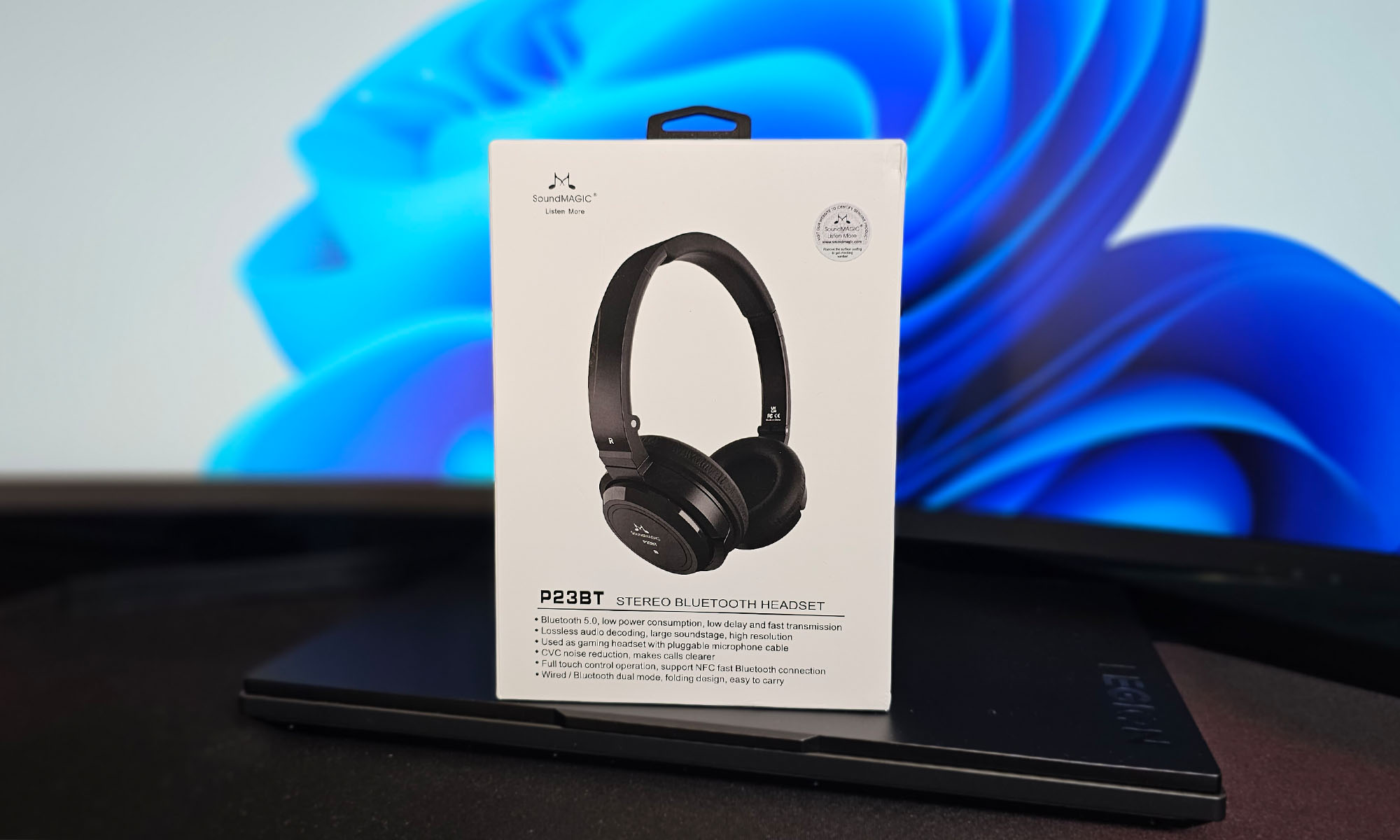
When SoundMAGIC unveiled the P23BT in 2021, they had a clear target audience in mind: people who crave the all-encompassing sound that large over-the-ear headphones offer but also want the freedom to move around. The product they delivered is a pair of on-ear headphones that offer much more value on all fronts than their small stature and small price tag ($59) suggest.
Build & Specifications
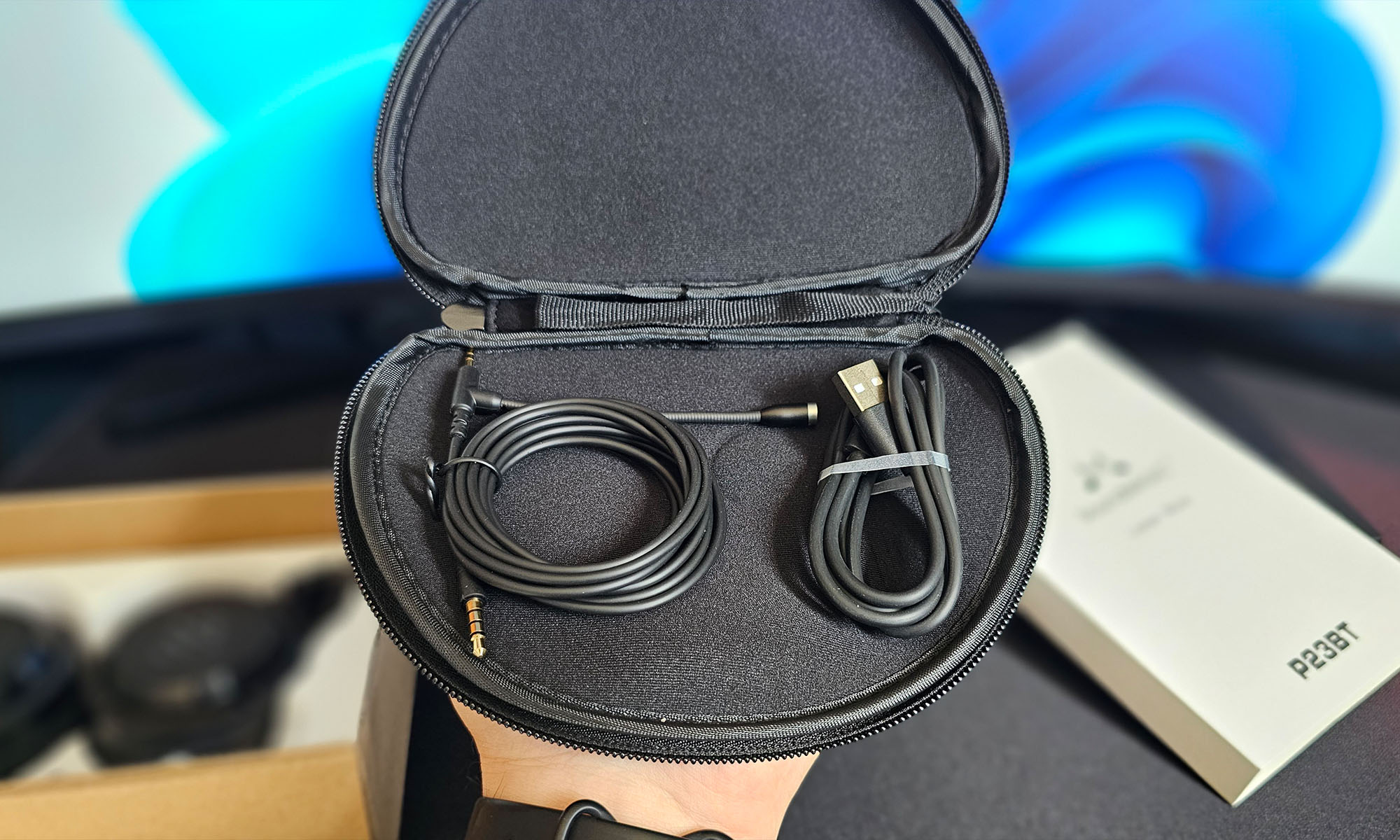
Crafted predominantly out of plastic, the P23BT headphones are designed with user comfort in mind. They boast ultra-soft protein leather earcups filled with memory foam padding, ensuring a snug fit over the ears for extended use. The stainless steel headband, wrapped in skin-friendly, sweat-proof food-grade silicone, adds to the headphones’ durability and makes them easy to clean.
The P23BT are powered by the Qualcomm QCC3034 chip and utilize its capabilities to the full extent, which means support for Bluetooth 5.0, APTX HD, APTX, SBC, and AAC. Together, these technologies ensure a stable connection and excellent sound quality even when the bitrate of your music is less than ideal.
Inside the two round ear cups are 40 mm dynamic drivers that are large enough to deliver thumping bass without sounding muddy. The ear cushions are made from ultra-soft protein leather, so you can expect great comfort and minimal sound leakage (great when listening to music during your morning commute).
Of course, wireless headphones need a battery to work, and the P23BT surprise with a battery that’s unusually large for their size. Thanks to its 400 mAh capacity, they can deliver up to 60 hours of continuous playback on a single charge. Once you run out of juice, you can either continue listening in wired mode or charge them via a USB Type-C port to full capacity in just 1 hour.
In terms of controls, the P23BT offer an intuitive touch control system that makes it possible to effortlessly play or pause music, skip tracks forward or backward, adjust the volume, and even answer calls. As a result, there’s no need to ever take your smartphone out of your pocket.
Sound Quality
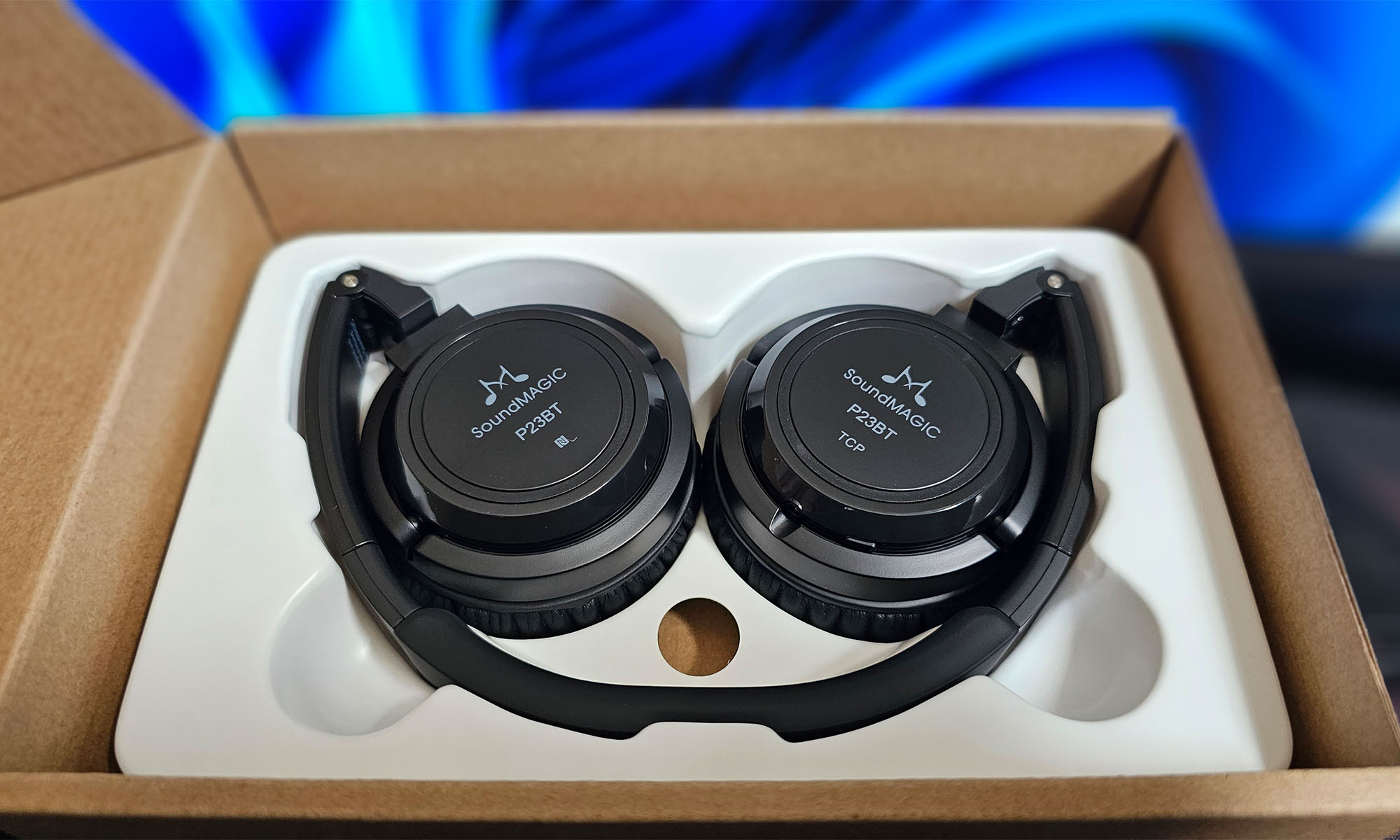
The P23BT on-ear headphones are characterized by their V-shaped sound signature. This essentially means that both the bass and treble frequencies get a little boost, resulting in a listening experience that exchanges some accuracy and clarity for fun and raw energy.
Whenever bass frequencies are summoned, the P23BT doesn’t hesitate to deliver. This is particularly apparent with bass-heavy genres like EDM or hip-hop, which can really make you feel the beat pulse through your head. Yes, this can be somewhat overwhelming for those who don’t consider themselves to be bassheads, but it’s an easy fix with some equalization.
Mid-range frequencies, housing most of the vocals and instruments, sound slightly lean since they occupy the least pronounced part of the V-shaped sound signature. The treble, on the other hand, offers a refreshing clarity without harshness or sibilance.
Sadly, there’s no active noise cancellation to protect you from outside noise when listening to music. Noise cancellation is available only during phone calls in the form of cVc noise cancellation technology, whose purpose is to suppress background sounds and make your voice crystal clear.
Verdict
The SoundMAGIC P23BT on-ear headphones offer an impressive audio experience, especially for bass enthusiasts, in a compact and comfortable design. While the lack of active noise cancellation during music playback might be a downside for some users, it’s a downside that’s very easy to live with given the headphones’ attractive price point.

- Long-term listening comfort
- Fun sound signature
- Exceptional battery life of up to 60 hours
- Intuitive touch control system
- Supports Bluetooth 5.0, APTX HD, APTX, SBC, and AAC

- Geared toward bassheads
- Lack of active noise cancellation during music playback
SoundMAGIC P60BT: Goodbye Distractions
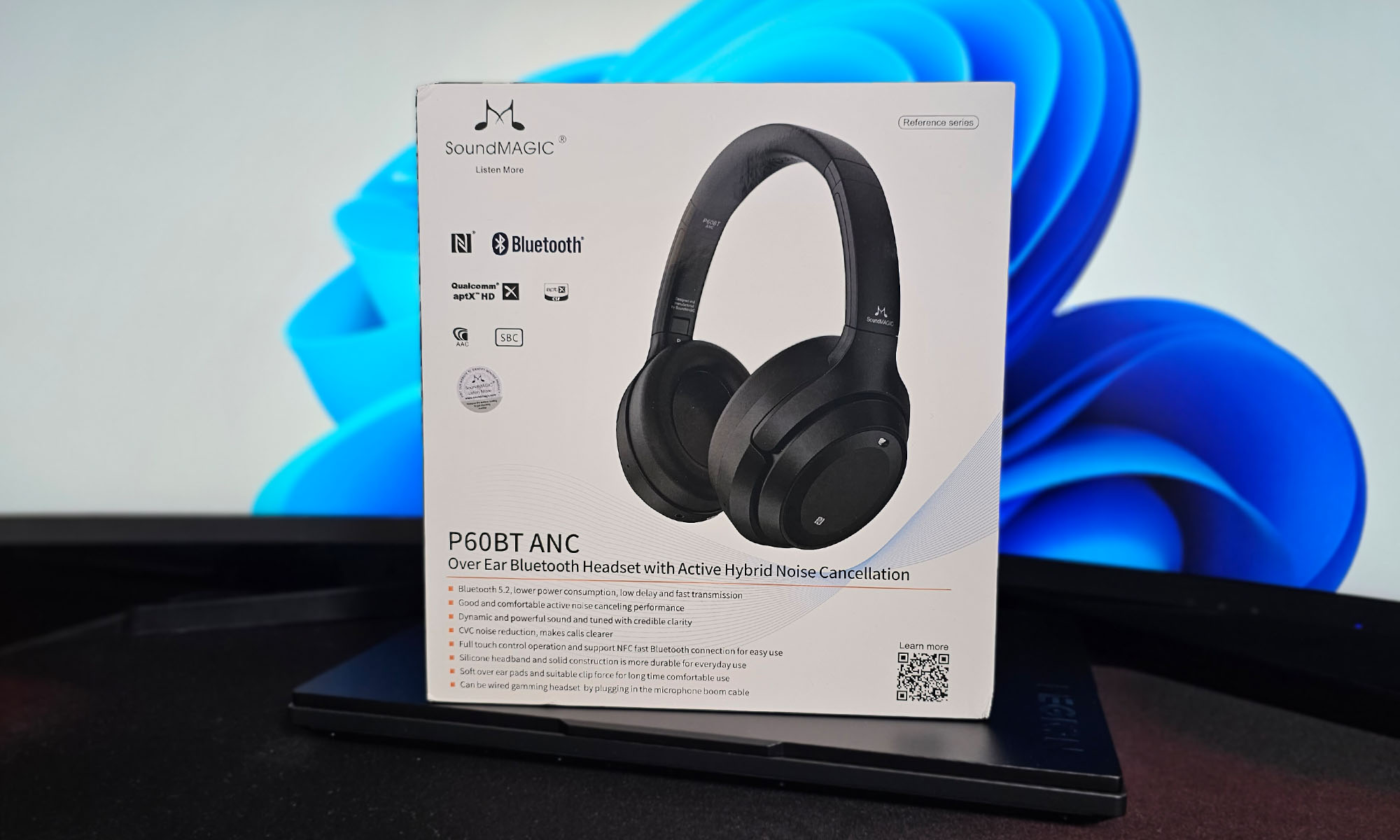
The P60BT are SoundMAGIC’s first over-ear wireless headphones. With the integration of active noise cancellation, they promise an immersive listening experience, free from the intrusions of the external world. These features, together with an impressively affordable price of just $189.96, positions the P60BT as an attractive alternative to renowned headphones like the Sony WH-1000XM5.
Build & Specifications
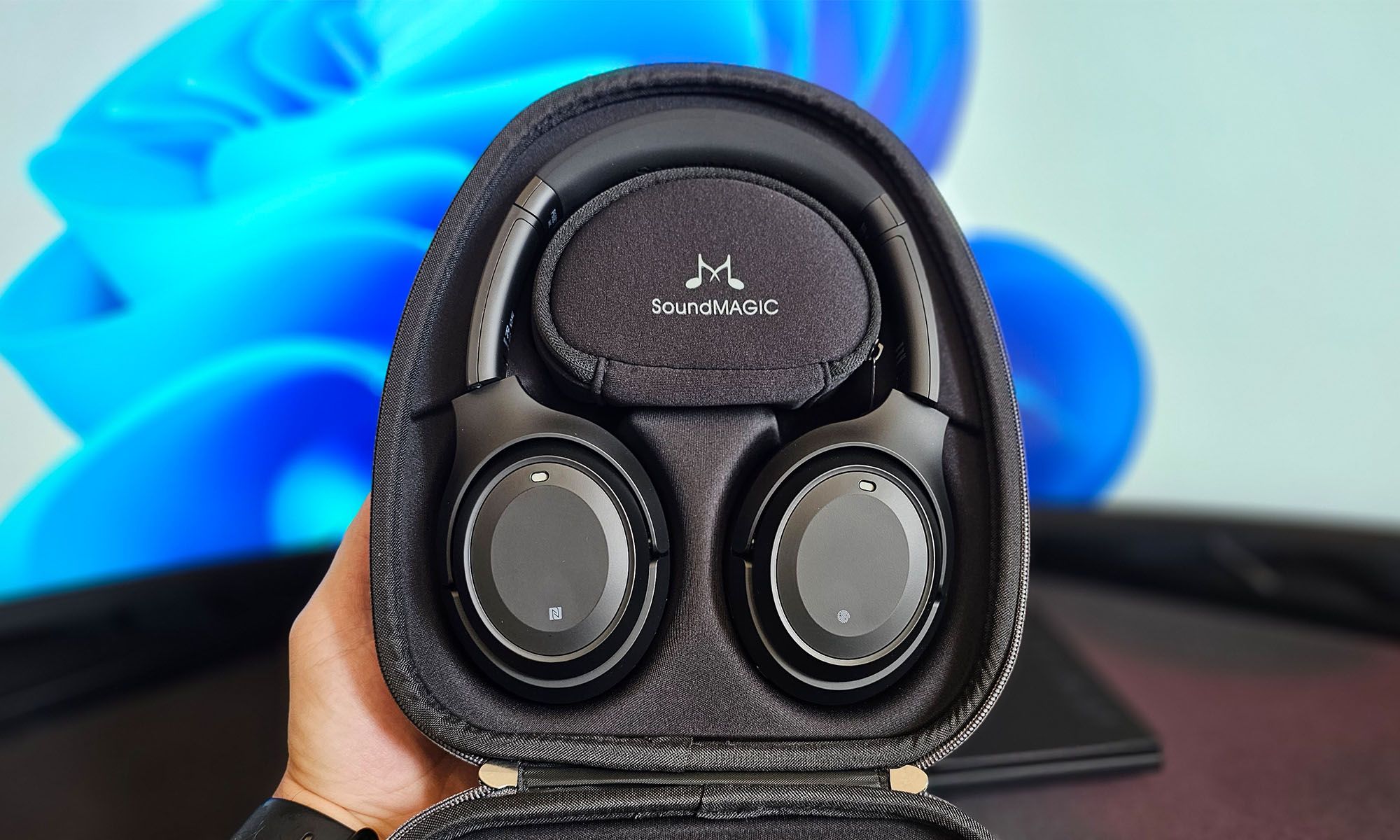
Sporting a sleek matte black finish, the P60BT’s design exudes an understated elegance. Constructed with a blend of plastic and metal, they strike a fine balance between durability and weight.
The earcups swivel and fold, making these headphones suitable even for travelers or those who are always on the go. Like their counterpart, the P23BT, these headphones also benefit from ultra-soft protein leather earcups, but with a deeper memory foam padding that encapsulates your ears. This not only provides superior comfort but also aids in passive noise isolation.
The P60BT harnesses the power of the Qualcomm QCC5124 chip, providing seamless connectivity with Bluetooth 5.2, LDAC, and APTX Adaptive. Surprisingly, they rely on the same 40 mm drivers as the P23BT, which isn’t necessarily a bad thing—just something that surprised us given how larger they are.
What’s also surprising is that the P60BT can play for “only” up to 50 hours on a charge without active noise cancelling enabled and 45 hours with ANC activated (the P23BT manage 10 extra hours). We first thought that the sophisticated noise-cancelling technology demanded more internal space, leaving less room for a larger battery, but that’s actually not the case because the spec sheet mentions a 800 mAh battery. So the Qualcomm QCC5124 chip is probably to blame as it likely consumes more power.
Continuing the trend of consistency between models, the P60BT employs the same user-friendly touch control system as the more affordable model, the P23BT. That means you can pause, resume, and skip with simple taps and gestures.
Sound Quality
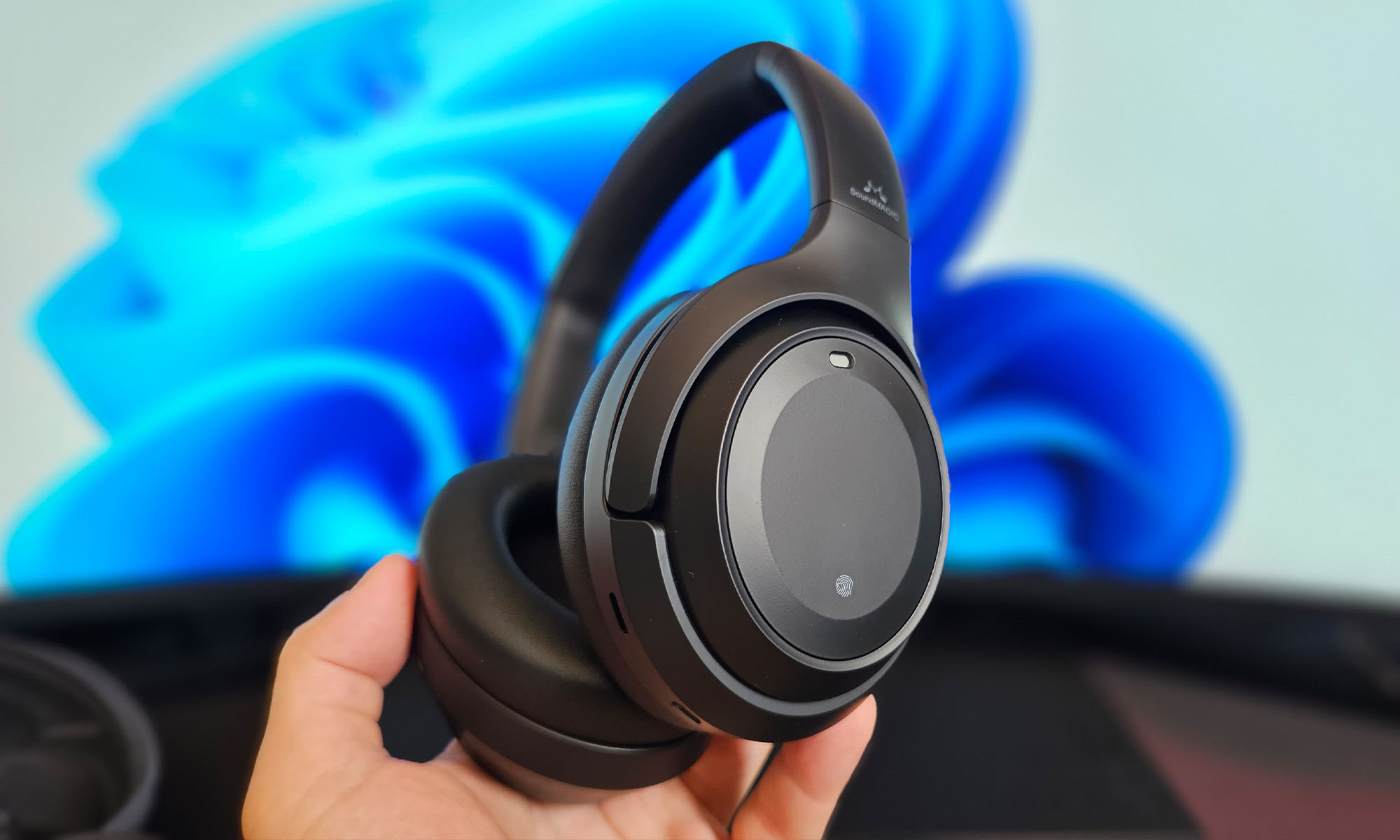
The P60BT are fairly balanced and well-behaved wireless headphones, but bass and especially sub-bass frequencies are more pronounced than the rest of the frequency spectrum. This is in line with the preferences of most casual listeners because it results in a richer and more immersive feel.
However, there’s a minor hiccup to be aware of: these headphones tend to play their tracks a tad quieter than their on-ear counterpart, the P23BT, even when cranked up to full volume. This may be a bit of a downer for those who like their music loud.
The good news is that the P60BT compensates for its softer audio output with an active noise cancellation (ANC) feature, which employs both internal and external microphones to combat outside noise by generating sound waves that are phase-opposite to the intrusive noises.
Instead of being able to only turn ANC on and off, you can also switch to Ambient mode in order to let in surrounding noises, ensuring you remain aware of your environment while still enjoying your audio. This is particularly useful for situations where you need to be cognizant of what’s happening around you, like when walking on a busy street or waiting for an announcement at a train station.
Overall, the sound quality of the P60BT doesn’t reach the heights of premium headphones like the Sony WH-1000XM5, but when considering their price point, the P60BT offer exceptional value, making them an excellent deal for budget-conscious audiophiles.
Verdict
The SoundMAGIC P60BT emerges as a strong contender in the mid-range wireless headphone market. Its active noise-cancellation, build quality, and sound profile make it hard to ignore, especially for those on a budget. While it may not match up to the likes of the Sony WH-1000XM5 in terms of pure audio quality, its affordable price tag means you’re getting significant bang for your buck.

- Great active noise cancellation at an affordable price
- Ultra-soft protein leather earcups with deep memory foam padding
- Support for Bluetooth 5.2
- User-friendly touch control system
- Ambient mode for situational awareness

- Slightly quieter audio output
- Lesser battery life compared to the P23BT
Conclusion
SoundMAGIC has consistently demonstrated its commitment to delivering high-quality audio experiences without the hefty price tags commonly associated with premium brands. The SoundMAGIC P23BT and P60BT wireless headphones are prime examples of this ethos, embodying what SoundMAGIC is all about: a splendid listening experience that doesn’t break the bank.
Product Reviews
iFLYTEK Smart Translator 4.0 Review: A Traveler’s Companion
With the iFLYTEK Smart Translator 4.0, traveling to more than 200 countries around the world can be a totally stress-free experience.
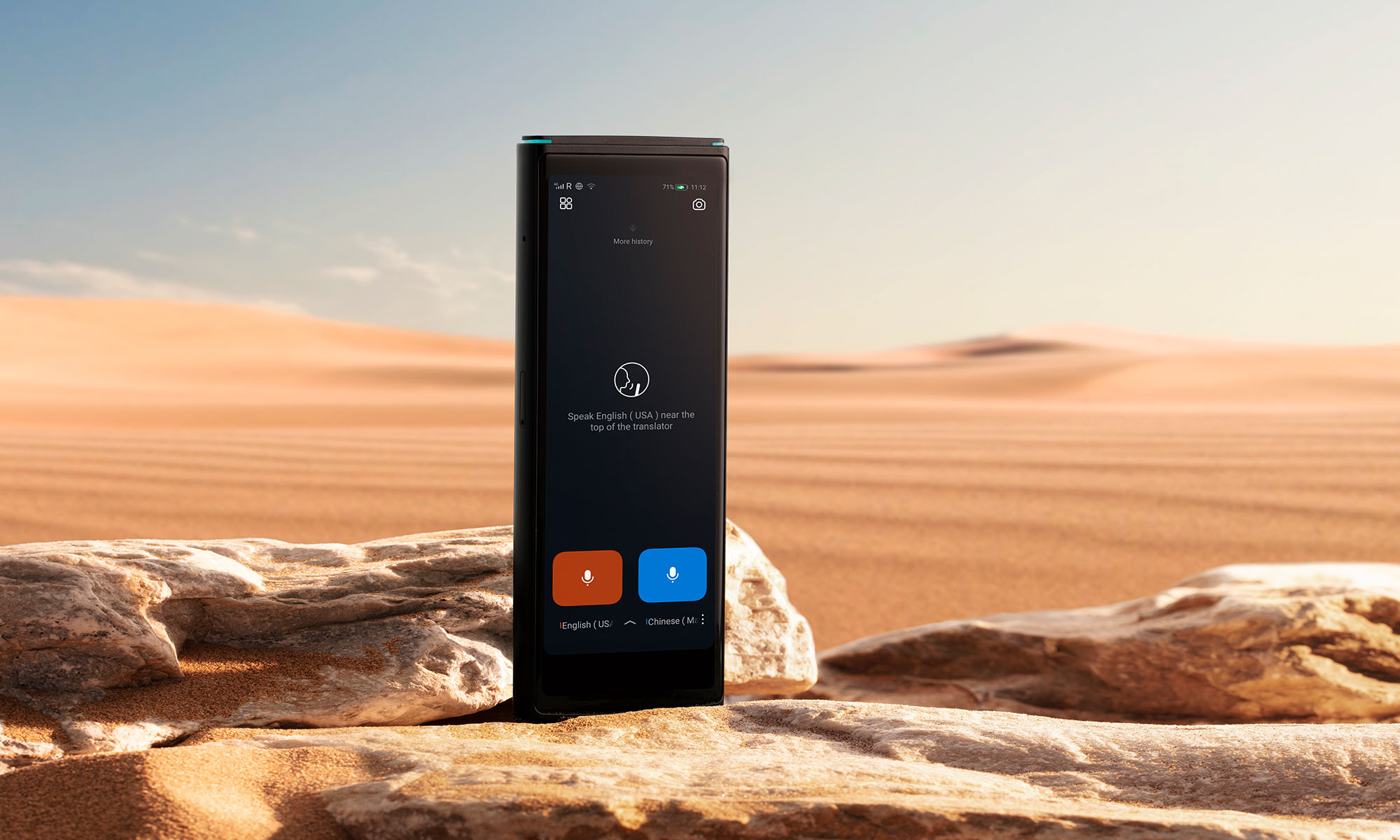
In this review, we’re taking a look at the iFLYTEK Smart Translator 4.0, an artificial intelligence-powered translator that promises to break down language barriers across the globe with its support for 60 languages.
But wait a minute – don’t you already have a smart translator with you wherever you travel in the form of your smartphone? That’s a great question, and my goal with this review is to answer it as comprehensively as possible to help you decide if the iFLYTEK Smart Translator 4.0 is a good investment for you.
Winning First Impressions
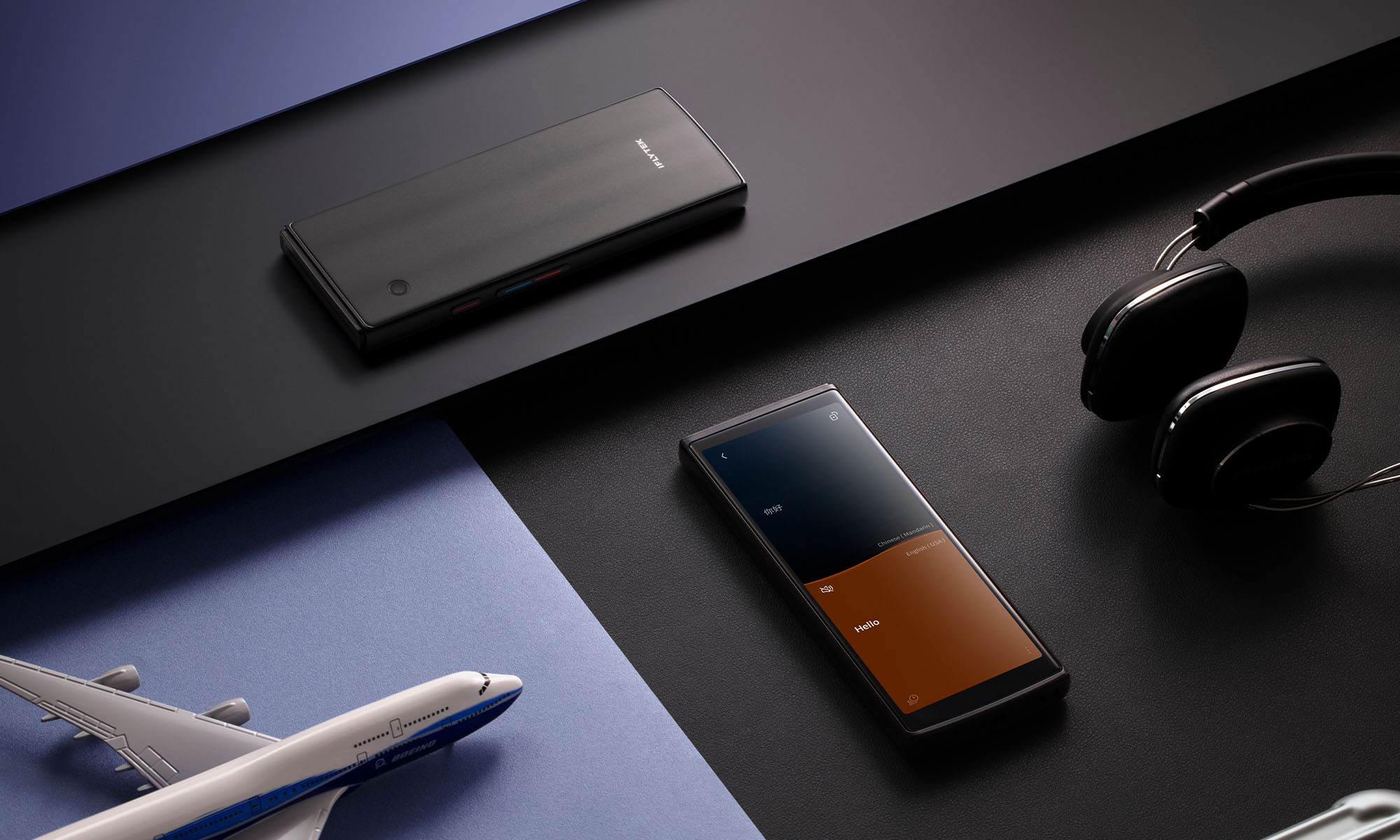
Unboxing the iFLYTEK Smart Translator 4.0 sets a premium tone right from the start. Inside the clean, minimalist packaging, you’ll find a USB-C charging cable, a SIM tray removal tool, comprehensive user documentation in multiple languages, and, of course, the translator itself.
At just 130 grams and measuring 140.6 x 56.5 x 10.4mm, the iFLYTEK Smart Translator 4.0 sports a sleek, pocket-friendly design. It’s slightly lighter and smaller than the average smartphone (the iPhone 16, for example, weighs 170 grams and measures 147.6 x 71.6 x 7.8mm), so it nicely disappears in just about any pocket. The build quality feels solid and premium, with a comfortable matte finish that resists fingerprints.
The 5.05-inch display dominates the front of the device. The screen is bright enough to be clearly visible outdoors, and the viewing angles are also good, which is an important feature when you’re showing translations to someone standing next to or across from you.
The edges of the iFLYTEK Smart Translator 4.0 house a thoughtfully laid out array of controls and slots: a power button and volume rocker on one side, a SIM card slot on the other, and a USB-C charging port at the bottom. The top edge houses the device’s secret weapon — a U-shaped quad-microphone array that enables accurate translation even in noisy environments. On the back, there’s a modest 5 MP camera with autofocus for photo translation.
Under the hood, the device is powered by a 2000 mAh battery that delivers impressive endurance of up to 6 hours of continuous translation use or 10 days in standby mode when not connected to the internet. There’s also an octa-core processor from Mediatek, which certainly isn’t the latest or greatest, especially compared to the latest flagship smartphone chips, but I find it to be well-matched to the device’s needs, as evidenced by the device’s real-time translation performance.
Key Technical Specifications
| Feature | Specification |
| Display: | 5.05-inch screen |
| Storage: | 2 GB RAM + 16 GB ROM |
| Battery: | 2000 mAh |
| Processor: | MTK 6762 (Octa-core) |
| Weight: | 130 g |
| Camera: | 5 MP with autofocus |
| Connectivity: | Wi-Fi, Bluetooth 5.0, eSIM, Nano SIM |
A User Interface That Makes Sense
If you’ve ever used your smartphone as a translator, you might have concluded that the user experience leaves a lot to be desired. I personally experienced this when I traveled to Serbia this summer. My bus home was about to leave in 10 minutes, but I couldn’t find the bus station. What’s worse, it was very early in the morning, and there were only a few people in sight. Starting to panic, I ran to the nearest person and took out my phone to open Google Translate so I could ask them for help.
First, I had issues unlocking my phone. Then I couldn’t find the Google Translate app. By then, the person was visibly annoyed, probably thinking that I was just wasting their time. Once I finally found the Google Translate app and said the sentence I wanted to translate, it took forever because the internet connection was spotty, and I hadn’t downloaded the language beforehand.
If I had the iFLYTEK Smart Translator 4.0, the experience would have been much more pleasant for both me and the person I was asking for help because it’s designed specifically for these real-world scenarios.
Thanks to the stripped-down, task-optimized version of Android that powers the translator, there’s no fumbling through apps or dealing with phone unlocking — just press the power button, and you’re ready to translate. Alternatively, you can activate one of its three main modes through simple swipes: voice translation (default screen), camera translation (swipe left), and face-to-face translation (swipe right).
Even the familiar Android settings menu has been simplified to its bare essentials. Gone are the overwhelming lists of options you’ll find on your smartphone – instead, you get just four straightforward categories: Network and Connection (for managing Wi-Fi, mobile data, and Bluetooth), Display (brightness and screen settings, such as font size), Sound and Vibration (volume controls and haptic feedback), and Systems and Updates (software updates and privacy settings).
Real-World Translation Performance
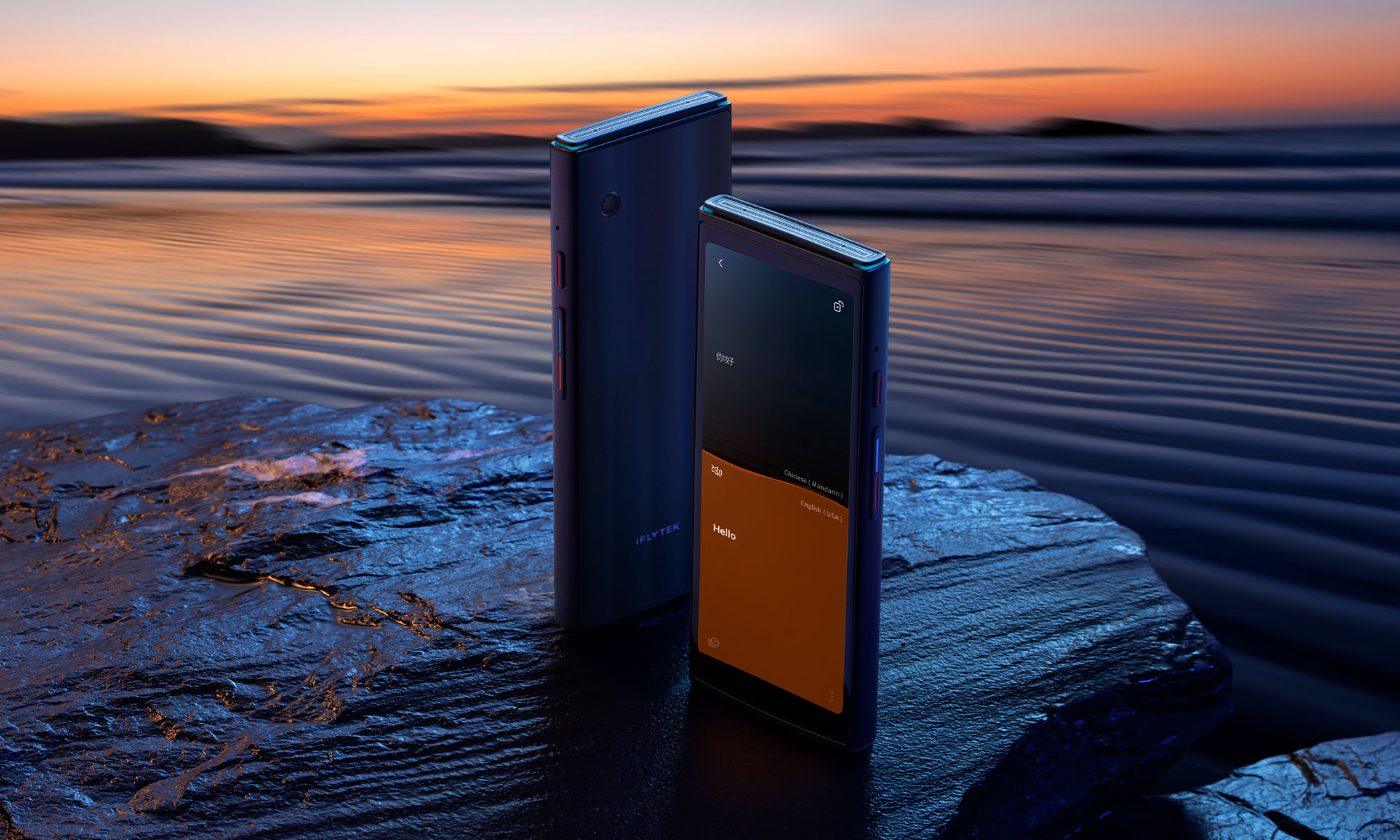
iFLYTEK isn’t just another company jumping on the AI bandwagon. They are widely recognized for their continued innovation in AI, including speech recognition and natural language processing.
iFLYTEK’s flagship large language model, Spark (launched in May 2023) has evolved into a sophisticated system that handles everything from business translations to scientific research thanks to its enhanced understanding of complex concepts and specialized knowledge, which enables highly accurate and rapid translations across various domains.
The iFLYTEK Smart Translator 4.0 essentially puts all of this experience and expertise in your pocket. It supports an impressive 60 languages for voice translation, covering more than 200 countries and regions worldwide. What’s particularly noteworthy is that 18 of these languages work completely offline, including major ones like English, Arabic, Chinese, Japanese, Korean, Russian, French, German, and Spanish.
Best of all, the iFLYTEK Smart Translator 4.0 comes with a two-year global data package that provides free connectivity in 148 countries worldwide. This means no hunting for local SIM cards or relying on spotty Wi-Fi connections in foreign countries. You can simply turn on the device and start translating.
Voice Translation
The voice translation mode serves as the default screen, and for a good reason — it’s likely to be your most-used feature. You can use this mode in several ways: press and hold to speak, use the physical volume buttons (color-coded for each language), or activate gesture controls where you simply pick up the device to speak and put it down to translate.
The U-shaped quad-microphone array I mentioned earlier in this review really shows its value by picking up speech clearly, even in a challenging environment like a noisy restaurant.
The microphone array is assisted by a noise-canceling algorithm that does an impressive job of isolating voices from background noise, something that traditional smartphone microphones often struggle with.
Face-To-Face Translation
The face-to-face translation mode is where the iFLYTEK Smart Translator 4.0 truly shines, and it’s clear that iFLYTEK has put a lot of thought into making this feature as natural as possible.
The screen splits into two sections, with each person’s language displayed on their respective side, and you can flip the screen orientation so the person you’re talking to can read their side comfortably.
The octa-core MTK 6762 processor really proves that it’s still very capable here, delivering translations in less than half a second, so you don’t have to worry about conversations flowing naturally, whether you’re haggling at a market or having an in-depth business discussion.
Camera Translation
While the 5-megapixel camera might seem underwhelming by today’s smartphone standards (the iPhone 16 Pro boasts a 48 MP main sensor, and the affordable Xiaomi Redmi Note 13 Pro has a 200 MP camera), it’s actually perfectly suited for its intended purpose because it’s responsive and capable of delivering great low-light performance.
The real star of the show is the OCR (Optical Character Recognition) technology baked into the camera app. It confidently handles everything from restaurant menus to street signs, and even handwritten notes (though, as with all OCR systems, your mileage may vary with particularly messy handwriting).
The translation appears overlaid on the original text in real-time to maintain the original formatting and layout. This really helps when translating more complex documents or menus as you can easily understand the context and relationship between different sections.
Should You Buy The iFLYTEK Smart Translator 4.0?
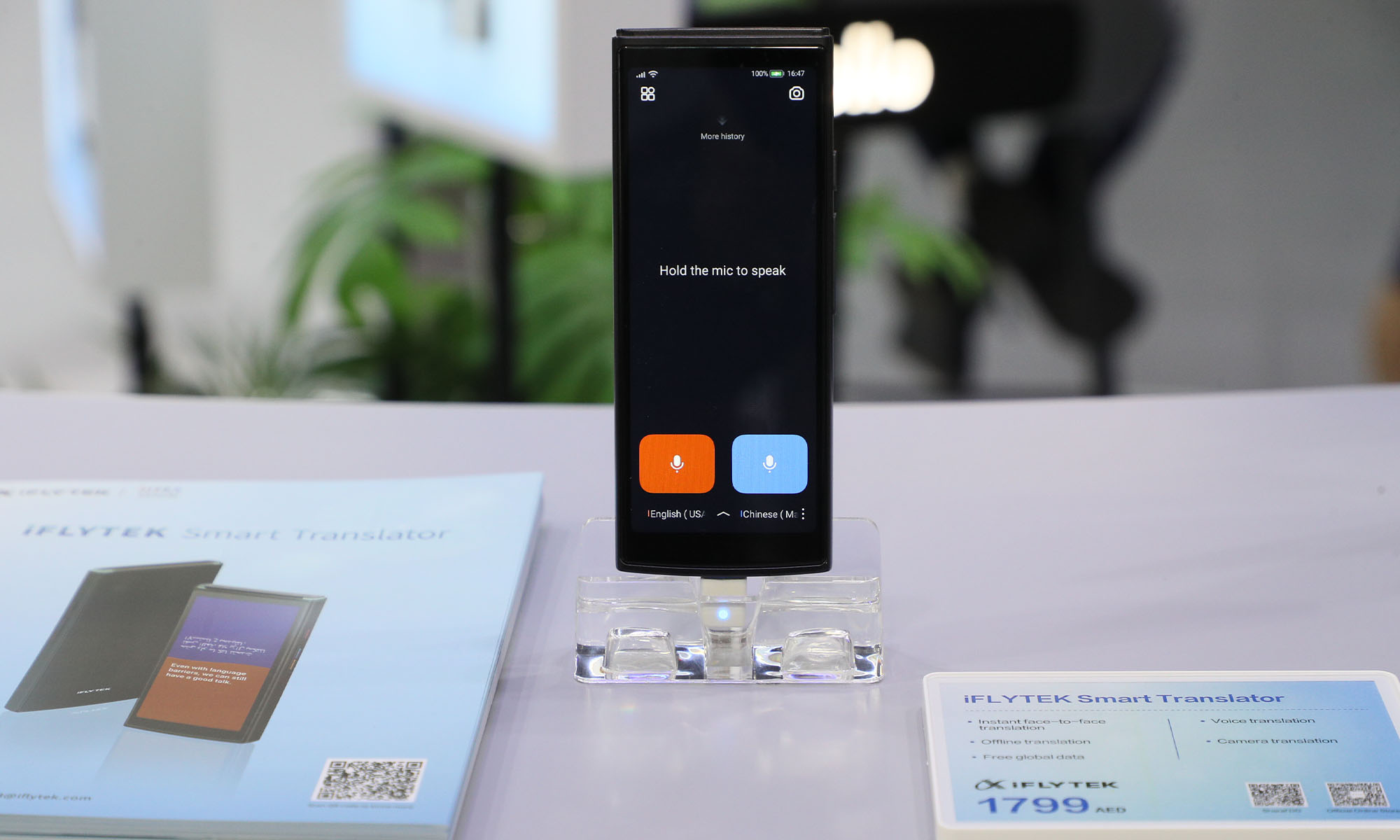
At the beginning of this review, I presented a simple question: in an age where everyone has a capable translator in their pocket in the form of a smartphone, is there still a place for a dedicated translation device? After testing the iFLYTEK Smart Translator 4.0, I can confidently answer this question — but the answer depends entirely on who you are and how you travel.
If you’re someone who goes on vacation once or twice a year, the iFLYTEK Smart Translator 4.0’s AED 1,799 / $429.99 price tag (at the time of writing this review) is difficult to justify. Yes, it would make your travel experience smoother and more comfortable than relying on your smartphone, but for occasional use, you can probably manage with Google Translate or similar apps even if it means dealing with occasional frustrations.
However, if you’re a frequent traveler — whether for business, extended leisure trips, or digital nomading — the iFLYTEK Smart Translator 4.0 becomes one of the best investments you can make. The included two years of unlimited global data coverage alone could save you hundreds of dollars in international roaming fees or local SIM card purchases across 148 countries. When you factor in the convenience of having a dedicated device that’s always ready to translate, the value proposition becomes clear.
Final Verdict
The iFLYTEK Smart Translator 4.0 is a purpose-built device that excels at its single task: breaking down language barriers. While its AED 1,799 / $429.99 price tag might seem steep at first, the combination of dedicated hardware, streamlined software, and two years of global connectivity makes it a compelling investment for frequent travelers. The device is available for purchase through iFLYTEK’s official website or at Sharaf DG.
Pros:
- Fast and accurate translations
- 18 languages available offline
- Excellent usability with dedicated hardware buttons
- Two years of free global data coverage in 148 countries
- Real-time OCR translation with layout preservation
- Responsive performance with minimal lag
Cons:
- Expensive for occasional travelers
- 5 MP camera seems dated (though adequate for OCR)
-

 News2 weeks ago
News2 weeks agoSpace42 & Cobham Satcom Launch New Satellite Broadband Terminal
-

 News3 weeks ago
News3 weeks agoVernewell UK: Forging The Future Of Intelligence, Quantum, And AI
-

 News2 weeks ago
News2 weeks agoYasmina Smart Speakers Now Feature Ramadan-Specific Content
-

 News2 weeks ago
News2 weeks agoPure Electric Expands To UAE, Boosting Micro-Mobility Sector




